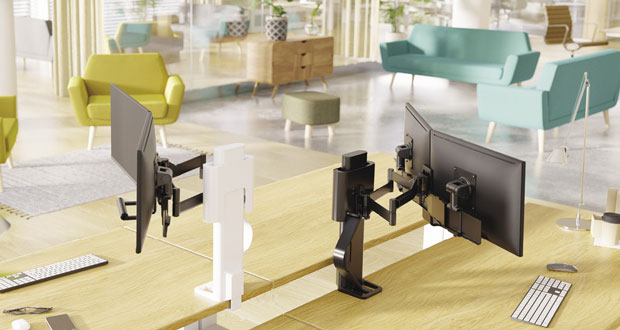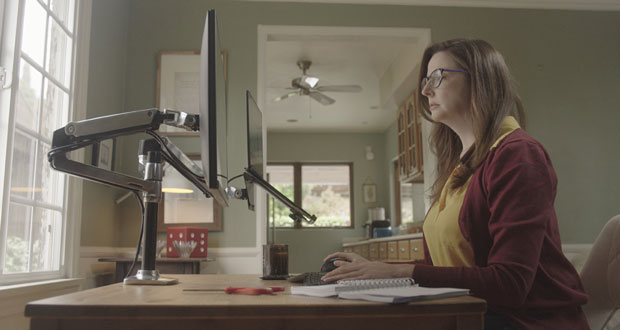ENSURING EMPLOYEE COMFORT AT WORK
The transition to flexible, shared workspaces is an opportunity for organisations to invest in ergonomic furniture that encourages movement and supports employee health. In many countries, employers are legally responsible for ensuring this. Companies can let employees choose from a range of ergonomic furniture for the home or provide a budget to purchase their own. Ergotron’s research shows this provision is getting started in the UK, with about 19 per cent of employees surveyed receiving such allowances from their employers.
Policy and practice are equally important. Leaders should formalise working arrangements through HR policies which reflect ergonomic working and physical activity while at work, and tools and technologies that meet the needs of evolving work styles. Employee wellbeing checks are vital as part of embracing employee performance, wellbeing, and satisfaction. An employer that is not regularly checking on staff cannot be sure employees are comfortable in their work. The survey showed that 63 per cent of employees do not have a manager who regularly checks on how they are doing, which is another area for improvement.
THE WORKING WAY FORWARD
If employers are intent on their staff maintaining an office presence, the goal must be to create an environment where employees want to work, by creating spaces and collaboration opportunities that are more satisfying and productive than being 100 per cent remote. And if the choice is home-based, it is equally as important that this is within a flexible workspace which promotes health and bolsters morale. Hybrid workspaces shouldn’t come at the expense of employee ergonomics.
The importance of an ergonomic workspace in the office and at home cannot be understated. It equates to making an investment in people, which is one of the key rules for a successful business. This first means developing a work strategy that supports employee health and is based on real and specific employee needs; then, it’s listening and working closely with your employees to create dedicated spaces. This way forward will encourage healthy movement, productivity, and a collaborative spirit, which will be more productive for individual workers and the bottom line.






